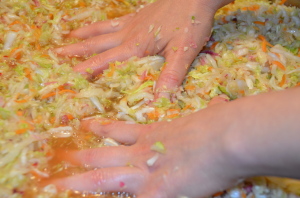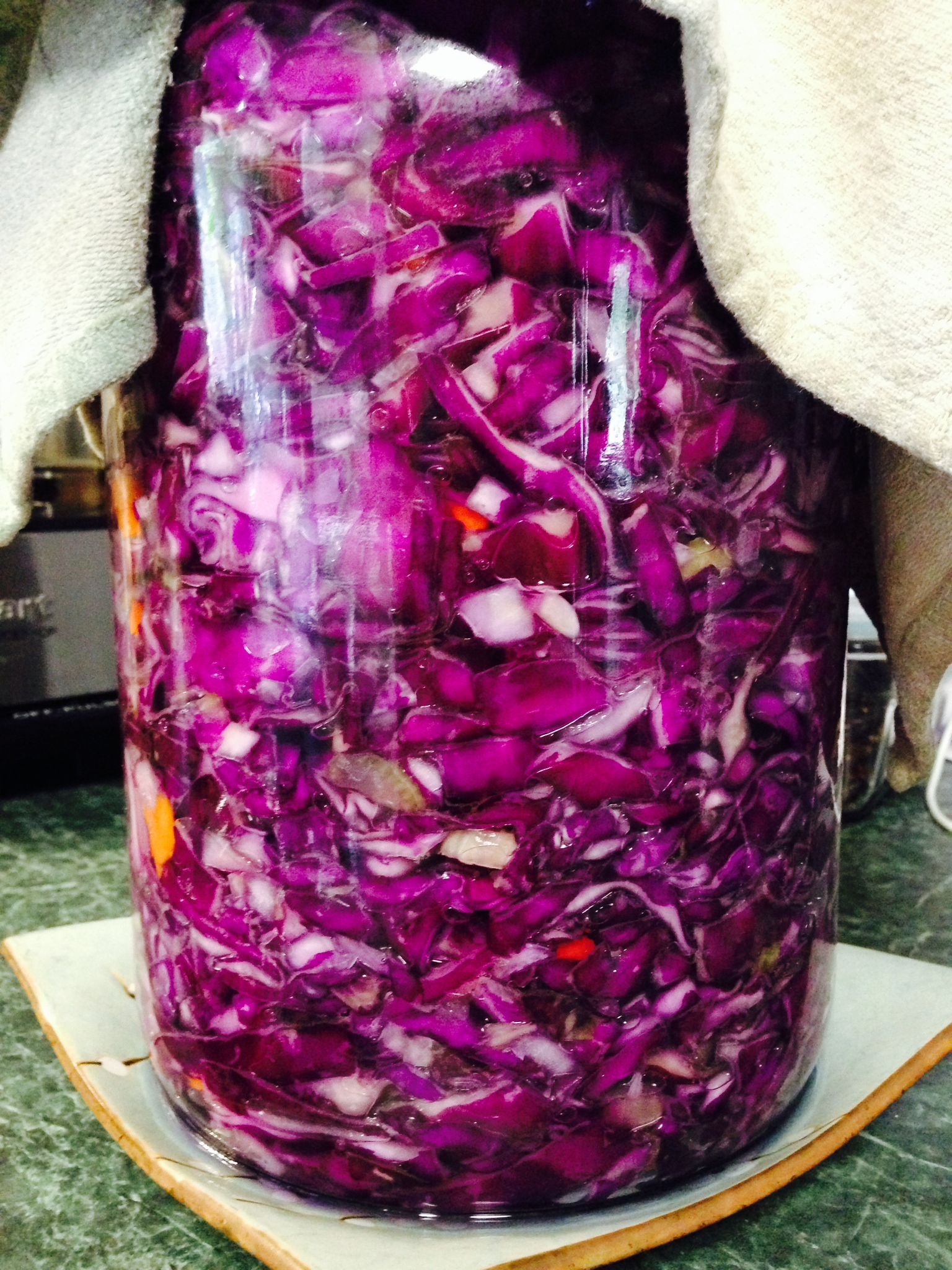Ingredients:
4 1/2 lbs of thinly sliced cabbage (any color)
1/2 lb of shredded carrots (optional)
3 Tbs of Sea Salt or Himalayan Salt
2 cups of water
couple of cloves of garlic, minced (optional)
Method:
Combine all of the ingredients in a large mixing bowl. Begin to knead the cabbage as if you would dough. Massage the salt into the cabbage and keep squishing it down and mixing it. The cabbage will begin to release more of it’s own juices and you will end up with a lot of liquid and “less” cabbage.
Once you have massaged the cabbage, carrots, and salt for 5 or more minutes, you can begin to press it into a crock, a glass jar, or even a pot. Press it down as firmly as you can to get as much of the air out as possible (the lacto-bacilli like an anaerobic (no oxygen) environment). Press the veggies down with a plate and put something heavy on top like a jar filled with water so that as the kraut begins to ferment and gases are released by the bacteria they don’t push your veggies out of the brine. Finally cover this whole thing with a large kitchen towel. Leave at room temperature or slightly cooler.
 Harvesting the kraut:
Harvesting the kraut:
Tips and tricks:
- Weigh your cabbage at the store on one of their scales – close enough to 4.5 lbs plus or minus a bit will be fine.
- Cut the cabbage in half or quarters, and de-core it before slicing.
- My favorite small fermenting crock (if not, this), then glass jars should work great, or a case of canning mason jars are fine and make great storage containers for dry goods in your pantry as well. (just make sure to “burp” your jars if they are tightly sealed at least once a day while you are in the active fermentation stage).

